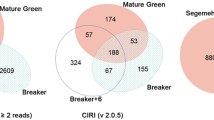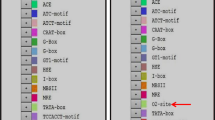Abstract
Carotenoids are plastidic isoprenoid pigments of great biological and biotechnological interest. The precursors for carotenoid production are synthesized through the recently elucidated methylerythritol phosphate (MEP) pathway. Here we have identified a tomato (Lycopersicon esculentum Mill.) cDNA sequence encoding a full-length protein with homology to the MEP pathway enzyme hydroxymethylbutenyl 4-diphosphate synthase (HDS, also called GCPE). Comparison with other plant and bacterial HDS sequences showed that the plant enzymes contain a plastid-targeting N-terminal sequence and two highly conserved plant-specific domains in the mature protein with no homology to any other sequence in the databases. The ubiquitous distribution of HDS-encoding expressed sequence tags (ESTs) in the tomato collections suggests that the corresponding gene is likely expressed throughout the plant. The role of HDS in controlling the supply of precursors for carotenoid biosynthesis was estimated from the bioinformatic and molecular analysis of transcript abundance in different stages of fruit development. No significant changes in HDS gene expression were deduced from the statistical analysis of EST distribution during fruit ripening, when an active MEP pathway is required to support a massive accumulation of carotenoids. RNA blot experiments confirmed that similar transcript levels were present in both the wild-type and carotenoid-depleted yellow ripe (r) mutant fruit independent of the stage of development and the carotenoid composition of the fruit. Together, our results are consistent with a non-limiting role for HDS in carotenoid biosynthesis during tomato fruit ripening.



Similar content being viewed by others
Abbreviations
- EST:
-
expressed sequence tag
- DXR:
-
deoxyxylulose 5-phosphate reductoisomerase
- DXS:
-
deoxyxylulose 5-phosphate synthase
- GCPE:
-
hydroxymethylbutenyl 4-diphosphate synthase
- HDS:
-
hydroxymethylbutenyl 4-diphosphate synthase
- MEP:
-
methylerythritol phosphate
- PSI:
-
plant-specific internal (domain)
- PSN:
-
plant-specific N-terminal (domain)
- UTR:
-
untranslated region
References
Adam P, Hecht S, Eisenreich W, Kaiser J, Grawert T, Arigoni D, Bacher A, Rohdich F (2002) Biosynthesis of terpenes: studies on 1-hydroxy-2-methyl-2-(E)-butenyl 4-diphosphate reductase. Proc Natl Acad Sci USA 99:12108–12113
Bartley GE, Scolnik PA (1995) Plant carotenoids: pigments for photoprotection, visual attraction and human health. Plant Cell 7:1027–1038
Carretero-Paulet L, Ahumada I, Cunillera N, Rodríguez-Concepción M, Ferrer A, Boronat A, Campos N (2002) Expression and molecular analysis of the Arabidopsis thaliana DXR gene encoding 1-deoxy-d-xylulose 5-phosphate reductoisomerase, the first committed enzyme of the 2-C-methyl-d-erythritol 4-phosphate pathway. Plant Physiol 129:1581–1591
Croteau R, Kutchan TM, Lewis NG (2000) Natural products (secondary metabolites). In: Buchanan B, Gruissem W, Jones R (eds) Biochemistry and molecular biology of plants. ASPB, Rockville, MD, USA, pp 1250–1268
Eisenreich W, Rohdich F, Bacher A (2001) Deoxyxylulose phosphate pathway to terpenoids. Trends Plant Sci 6:78–84
Estévez JM, Cantero A, Romero C, Kawaide H, Jiménez LF, Kuzuyama T, Seto H, Kamiya Y, Leon P (2000) Analysis of the expression of CLA1, a gene that encodes the 1-deoxyxylulose 5-phosphate synthase of the 2-C-methyl-d-erythritol-4-phosphate pathway in Arabidopsis. Plant Physiol 124:95–103
Estévez JM, Cantero A, Reindl A, Reichler S, Leon P (2001) 1-Deoxy-d-xylulose-5-phosphate synthase, a limiting enzyme for plastidic isoprenoid biosynthesis in plants. J Biol Chem 25:22901–22909
Fray RG, Grierson D (1993) Identification and genetic analysis of normal and mutant phytoene synthase genes of tomato by sequencing, complementation and co-suppression. Plant Mol Biol 22:589–602
Fray RG, Wallace A, Fraser PD, Valero D, Hedden P, Bramley PM, Grierson D (1995) Constitutive expression of a fruit phytoene synthase gene in transgenic tomatoes causes dwarfism by redirecting metabolites from the gibberellin pathway. Plant J 8:693–701
Gillaspy G, Ben-David H, Gruissem W (1993) Fruits: a developmental perspective. Plant Cell 5:1439–1451
Handelman GJ (2001) The evolving role of carotenoids in human biochemistry. Nutrition 17:818–222
Hecht S, Eisenreich W, Adam P, Amslinger S, Kis K, Bacher A, Arigoni D, Rohdich F (2001) Studies on the nonmevalonate pathway to terpenes: the role of the GcpE (IspG) protein. Proc Natl Acad Sci USA 26:14837–14842
Hirschberg J (2001) Carotenoid biosynthesis in flowering plants. Curr Opin Plant Biol 4:210–218
Lawrence SD, Cline K, Moore GA (1997) Chromoplast development in ripening tomato fruit: identification of cDNAs for chromoplast-targeted proteins and characterization of a cDNA encoding a plastid-localized low-molecular-weight heat shock protein. Plant Mol Biol 33:483–492
Lichtenthaler HK (1999) The 1-deoxy-d-xylulose 5-phosphate pathway of isoprenoid biosynthesis in plants. Annu Rev Plant Physiol Plant Mol Biol 50:47–65
Lois LM, Rodríguez-Concepción M, Gallego F, Campos N, Boronat A (2000) Carotenoid biosynthesis during tomato fruit development: regulatory role of 1-deoxy-d-xylulose 5-phosphate synthase. Plant J 22:503–513
Quackenbush J, Cho J, Lee D, Liang F, Holt I, Karamycheva S, Parvizi B, Pertea G, Sultana R, White J (2001) The TIGR gene indices: analysis of gene transcript sequences in highly sampled eukaryotic species. Nucleic Acids Res 29:159–164
Querol J, Campos N, Imperial S, Boronat A, Rodríguez-Concepción M (2002) Functional analysis of the Arabidopsis thaliana GCPE protein involved in plastid isoprenoid biosynthesis. FEBS Lett 514:343–346
Rodríguez-Concepción M, Boronat A (2002) Elucidation of the methylerythritol phosphate (MEP) pathway for isoprenoid biosynthesis in bacteria and plastids. A metabolic milestone achieved through genomics. Plant Physiol 130:1079–1089
Rodríguez-Concepción M, Gruissem W (1999) Arachidonic acid alters tomato HMG expression and fruit growth and induces 3-hydroxy-3-methylglutaryl coenzyme A reductase-independent lycopene accumulation. Plant Physiol 119:41–48
Rodríguez-Concepción M, Ahumada I, Diez-Juez E, Sauret-Güeto S, Lois LM, Gallego F, Carretero-Paulet L, Campos N, Boronat A (2001) 1-Deoxy-d-xylulose 5-phosphate reductoisomerase and plastid isoprenoid biosynthesis during tomato fruit ripening. Plant J 27:213–222
Rohdich F, Wungsintaweekul J, Lüttgen H, Fischer M, Eisenreich W, Schuhr CA, Fellermeier M, Schramek N, Zenk MH, Bacher A (2000) Biosynthesis of terpenoids: 4-diphosphocytidyl-2-C-methyl-d-erythritol kinase from tomato. Proc Natl Acad Sci USA 97:8251–8256
Rohdich F, Hecht S, Gartner K, Adam P, Krieger C, Amslinger S, Arigoni D, Bacher A, Eisenreich W (2002) Studies on the nonmevalonate terpene biosynthetic pathway: metabolic role of IspH (LytB) protein. Proc Natl Acad Sci USA 99:1158–1163
Sandmann G (2001) Genetic manipulation of carotenoid biosynthesis: strategies, problems and achievements. Trends Plant Sci 6:14–17
Stekel DJ, Git Y, Falciani F (2000) The comparison of gene expression from multiple cDNA libraries. Genome Res 10:2055–2061
Wolff M, Seemann M, Grosdmange-Billiard C, Tritsch D, Campos N, Rodríguez-Concepción M, Boronat A, Rohmer M (2002) Isoprenoid biosynthesis via the methylerythritol phosphate pathway. (E)-4-Hydroxy-3-methyl but-2-enyl diphosphate: chemical synthesis and formation from methylerythritol cyclodiphosphate by a cell-free system from Escherichia coli. Tetrahedron Lett 43:2555–2559
Acknowledgements
We thank D. Frisch (Clemson University Genomics Institute) for the tomato cLED4F3 clone. The help and advice of the staff of the Serveis de Camps Experimentals (greenhouse facilities) of the Universitat de Barcelona are greatly appreciated. We also thank A. Orozco for valuable technical assistance, and the laboratory members for their collaboration. This work was supported in part by grant BIO2002-1653 (to M.R.-C.) from the Spanish Ministerio de Ciencia y Tecnología and grant 2001SGR00109 from the Generalitat de Catalunya (to A.B.). L.M.L. received a doctoral fellowship from the Spanish Ministerio de Educación y Cultura.
Author information
Authors and Affiliations
Corresponding author
Rights and permissions
About this article
Cite this article
Rodríguez-Concepción, M., Querol, J., Lois, L.M. et al. Bioinformatic and molecular analysis of hydroxymethylbutenyl diphosphate synthase (GCPE) gene expression during carotenoid accumulation in ripening tomato fruit. Planta 217, 476–482 (2003). https://doi.org/10.1007/s00425-003-1008-5
Received:
Accepted:
Published:
Issue Date:
DOI: https://doi.org/10.1007/s00425-003-1008-5




